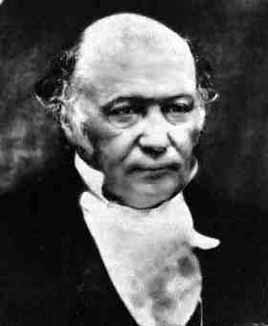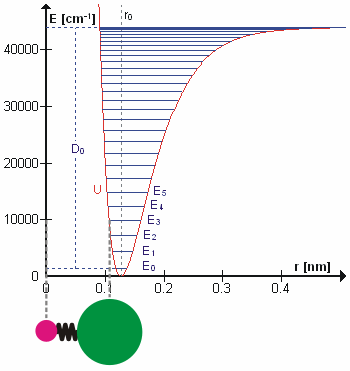|
Jacobi Coordinates
In the theory of many-particle systems, Jacobi coordinates often are used to simplify the mathematical formulation. These coordinates are particularly common in treating polyatomic molecules and chemical reactions, and in celestial mechanics. For example, see An algorithm for generating the Jacobi coordinates for ''N'' bodies may be based upon binary trees. In words, the algorithm may be described as follows: We choose two of the ''N'' bodies with position coordinates x''j'' and x''k'' and we replace them with one virtual body at their centre of mass. We define the relative position coordinate r''jk'' = x''j'' − x''k''. We then repeat the process with the ''N'' − 1 bodies consisting of the other ''N'' − 2 plus the new virtual body. After ''N'' − 1 such steps we will have Jacobi coordinates consisting of the relative positions and one coordinate giving the position of the last defined centre of mass. For ... [...More Info...] [...Related Items...] OR: [Wikipedia] [Google] [Baidu] |
Center Of Mass
In physics, the center of mass of a distribution of mass in space (sometimes referred to as the barycenter or balance point) is the unique point at any given time where the weight function, weighted relative position (vector), position of the distributed mass sums to zero. For a rigid body containing its center of mass, this is the point to which a force may be applied to cause a linear acceleration without an angular acceleration. Calculations in mechanics are often simplified when formulated with respect to the center of mass. It is a hypothetical point where the entire mass of an object may be assumed to be concentrated to visualise its motion. In other words, the center of mass is the particle equivalent of a given object for application of Newton's laws of motion. In the case of a single rigid body, the center of mass is fixed in relation to the body, and if the body has uniform density, it will be located at the centroid. The center of mass may be located outside the Phys ... [...More Info...] [...Related Items...] OR: [Wikipedia] [Google] [Baidu] |
Lagrangian Mechanics
In physics, Lagrangian mechanics is a formulation of classical mechanics founded on the d'Alembert principle of virtual work. It was introduced by the Italian-French mathematician and astronomer Joseph-Louis Lagrange in his presentation to the Turin Academy of Science in 1760 culminating in his 1788 grand opus, ''Mécanique analytique''. Lagrangian mechanics describes a mechanical system as a pair consisting of a configuration space (physics), configuration space ''M'' and a smooth function L within that space called a ''Lagrangian''. For many systems, , where ''T'' and ''V'' are the Kinetic energy, kinetic and Potential energy, potential energy of the system, respectively. The stationary action principle requires that the Action (physics)#Action (functional), action functional of the system derived from ''L'' must remain at a stationary point (specifically, a Maximum and minimum, maximum, Maximum and minimum, minimum, or Saddle point, saddle point) throughout the time evoluti ... [...More Info...] [...Related Items...] OR: [Wikipedia] [Google] [Baidu] |
Hamiltonian Mechanics
In physics, Hamiltonian mechanics is a reformulation of Lagrangian mechanics that emerged in 1833. Introduced by Sir William Rowan Hamilton, Hamiltonian mechanics replaces (generalized) velocities \dot q^i used in Lagrangian mechanics with (generalized) ''momenta''. Both theories provide interpretations of classical mechanics and describe the same physical phenomena. Hamiltonian mechanics has a close relationship with geometry (notably, symplectic geometry and Poisson structures) and serves as a Hamilton–Jacobi equation, link between classical and quantum mechanics. Overview Phase space coordinates (''p'', ''q'') and Hamiltonian ''H'' Let (M, \mathcal L) be a Lagrangian mechanics, mechanical system with configuration space (physics), configuration space M and smooth Lagrangian_mechanics#Lagrangian, Lagrangian \mathcal L. Select a standard coordinate system (\boldsymbol,\boldsymbol) on M. The quantities \textstyle p_i(\boldsymbol,\boldsymbol,t) ~\stackrel~ / are called ''m ... [...More Info...] [...Related Items...] OR: [Wikipedia] [Google] [Baidu] |
Chemical Reactions
A chemical reaction is a process that leads to the chemical transformation of one set of chemical substances to another. When chemical reactions occur, the atoms are rearranged and the reaction is accompanied by an energy change as new products are generated. Classically, chemical reactions encompass changes that only involve the positions of electrons in the forming and breaking of chemical bonds between atoms, with no change to the nuclei (no change to the elements present), and can often be described by a chemical equation. Nuclear chemistry is a sub-discipline of chemistry that involves the chemical reactions of unstable and radioactive elements where both electronic and nuclear changes can occur. The substance (or substances) initially involved in a chemical reaction are called reactants or reagents. Chemical reactions are usually characterized by a chemical change, and they yield one or more products, which usually have properties different from the reactants. Reactio ... [...More Info...] [...Related Items...] OR: [Wikipedia] [Google] [Baidu] |
Molecular Geometry
Molecular geometry is the three-dimensional arrangement of the atoms that constitute a molecule. It includes the general shape of the molecule as well as bond lengths, bond angles, torsional angles and any other geometrical parameters that determine the position of each atom. Molecular geometry influences several properties of a substance including its reactivity, polarity, phase of matter, color, magnetism and biological activity. The angles between bonds that an atom forms depend only weakly on the rest of a molecule, i.e. they can be understood as approximately local and hence transferable properties. Determination The molecular geometry can be determined by various spectroscopic methods and diffraction methods. IR, microwave and Raman spectroscopy can give information about the molecule geometry from the details of the vibrational and rotational absorbance detected by these techniques. X-ray crystallography, neutron diffraction and electron diffraction can g ... [...More Info...] [...Related Items...] OR: [Wikipedia] [Google] [Baidu] |
Molecular Vibration
A molecular vibration is a Periodic function, periodic motion of the atoms of a molecule relative to each other, such that the center of mass of the molecule remains unchanged. The infrared spectroscopy correlation table, typical vibrational frequencies range from less than 1013 hertz, Hz to approximately 1014 Hz, corresponding to wavenumbers of approximately 300 to 3000 cm−1 and wavelengths of approximately 30 to 3 μm. Vibrations of polyatomic molecules are described in terms of normal modes, which are independent of each other, but each normal mode involves simultaneous vibrations of parts of the molecule. In general, a non-linear molecule with ''N'' atoms has vibrational mode, normal modes of vibration, but a ''linear'' molecule has modes, because rotation about the molecular axis cannot be observed. A diatomic molecule has one normal mode of vibration, since it can only stretch or compress the single bond. A molecular vibration is excited when the mo ... [...More Info...] [...Related Items...] OR: [Wikipedia] [Google] [Baidu] |
Jacobian Matrix And Determinant
In vector calculus, the Jacobian matrix (, ) of a vector-valued function of several variables is the matrix of all its first-order partial derivatives. If this matrix is square, that is, if the number of variables equals the number of components of function values, then its determinant is called the Jacobian determinant. Both the matrix and (if applicable) the determinant are often referred to simply as the Jacobian. They are named after Carl Gustav Jacob Jacobi. The Jacobian matrix is the natural generalization to vector valued functions of several variables of the derivative and the differential of a usual function. This generalization includes generalizations of the inverse function theorem and the implicit function theorem, where the non-nullity of the derivative is replaced by the non-nullity of the Jacobian determinant, and the multiplicative inverse of the derivative is replaced by the inverse of the Jacobian matrix. The Jacobian determinant is fundamentally use ... [...More Info...] [...Related Items...] OR: [Wikipedia] [Google] [Baidu] |
N-body Problem
In physics, the -body problem is the problem of predicting the individual motions of a group of astronomical object, celestial objects interacting with each other gravitationally.Leimanis and Minorsky: Our interest is with Leimanis, who first discusses some history about the -body problem, especially Ms. Kovalevskaya's 1868–1888 twenty-year complex-variables approach, failure; Section 1: "The Dynamics of Rigid Bodies and Mathematical Exterior Ballistics" (Chapter 1, "The motion of a rigid body about a fixed point (Euler and Poisson equations)"; Chapter 2, "Mathematical Exterior Ballistics"), good precursor background to the -body problem; Section 2: "Celestial Mechanics" (Chapter 1, "The Uniformization of the Three-body Problem (Restricted Three-body Problem)"; Chapter 2, "Capture in the Three-Body Problem"; Chapter 3, "Generalized -body Problem"). Solving this problem has been motivated by the desire to understand the motions of the Sun, Moon, planets, and visible stars. In th ... [...More Info...] [...Related Items...] OR: [Wikipedia] [Google] [Baidu] |
Jacobi Coordinates — Illustration For Four Bodies
Jacobi may refer to: People * Jacobi (surname), a list of people with the surname * Jacobi Boykins (born 1995), American basketball player * Jacobi Francis (born 1998), American football player * Jacobi Mitchell (born 1986), Bahamian sprinter * Jacobi Robinson (born 1984), Bermudian cricketer In mathematics Concepts named after the German mathematician Carl Gustav Jacob Jacobi: * Jacobi sum, a type of character sum * Jacobi method, a method for determining the solutions of a diagonally dominant system of linear equations * Jacobi eigenvalue algorithm, a method for calculating the eigenvalues and eigenvectors of a real symmetric matrix * Jacobi elliptic functions, a set of doubly-periodic functions * Jacobian matrix and determinant of a smooth map between Euclidean spaces or smooth manifolds * Jacobi operator (Jacobi matrix), a tridiagonal symmetric matrix appearing in the theory of orthogonal polynomials * Jacobi polynomials, a class of orthogonal polynomials * Jacobi symbo ... [...More Info...] [...Related Items...] OR: [Wikipedia] [Google] [Baidu] |
Binary Trees
In computer science, a binary tree is a tree data structure in which each node has at most two children, referred to as the ''left child'' and the ''right child''. That is, it is a ''k''-ary tree with . A recursive definition using set theory is that a binary tree is a triple , where ''L'' and ''R'' are binary trees or the empty set and ''S'' is a singleton (a single–element set) containing the root. From a graph theory perspective, binary trees as defined here are arborescences. A binary tree may thus be also called a bifurcating arborescence, a term which appears in some early programming books before the modern computer science terminology prevailed. It is also possible to interpret a binary tree as an undirected, rather than directed graph, in which case a binary tree is an ordered, rooted tree. Some authors use rooted binary tree instead of ''binary tree'' to emphasize the fact that the tree is rooted, but as defined above, a binary tree is always rooted. In math ... [...More Info...] [...Related Items...] OR: [Wikipedia] [Google] [Baidu] |
Princeton University Press
Princeton University Press is an independent publisher with close connections to Princeton University. Its mission is to disseminate scholarship within academia and society at large. The press was founded by Whitney Darrow, with the financial support of Charles Scribner, as a printing press to serve the Princeton community in 1905. Its distinctive building was constructed in 1911 on William Street in Princeton. Its first book was a new 1912 edition of John Witherspoon's ''Lectures on Moral Philosophy.'' History Princeton University Press was founded in 1905 by a recent Princeton graduate, Whitney Darrow, with financial support from another Princetonian, Charles Scribner II. Darrow and Scribner purchased the equipment and assumed the operations of two already existing local publishers, that of the ''Princeton Alumni Weekly'' and the Princeton Press. The new press printed both local newspapers, university documents, '' The Daily Princetonian'', and later added book publishing ... [...More Info...] [...Related Items...] OR: [Wikipedia] [Google] [Baidu] |




